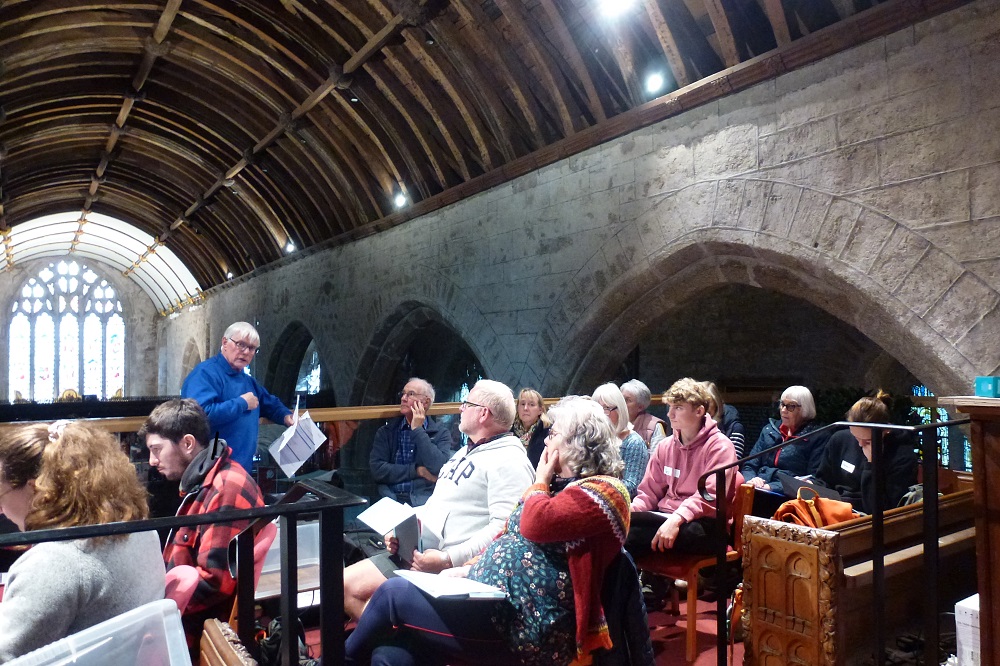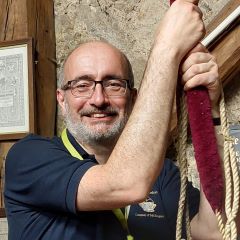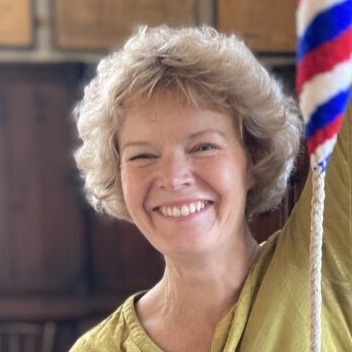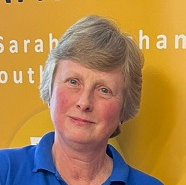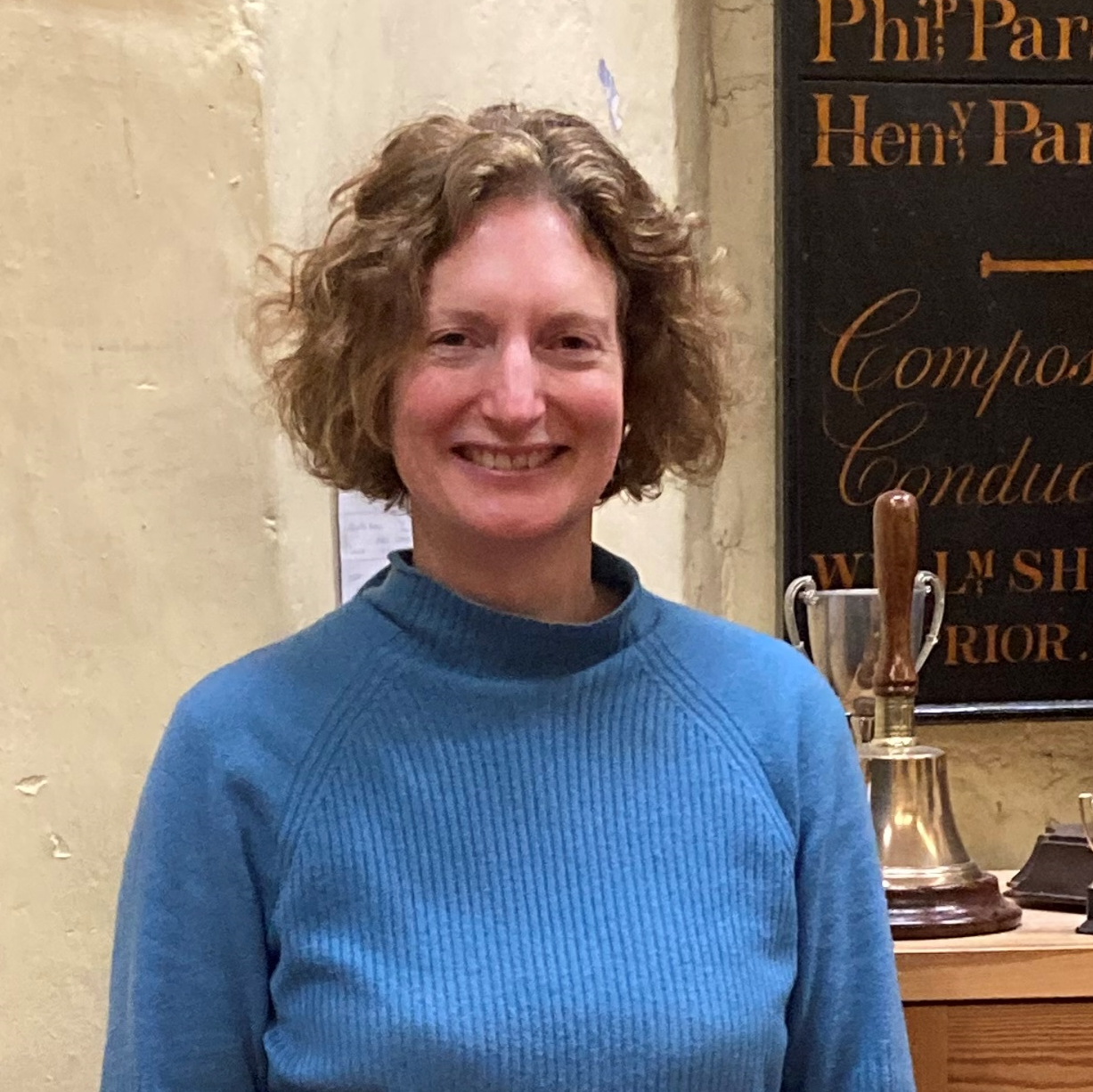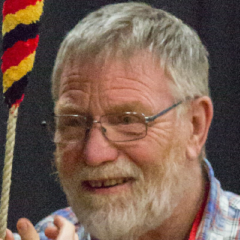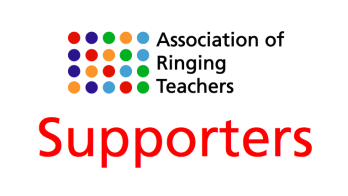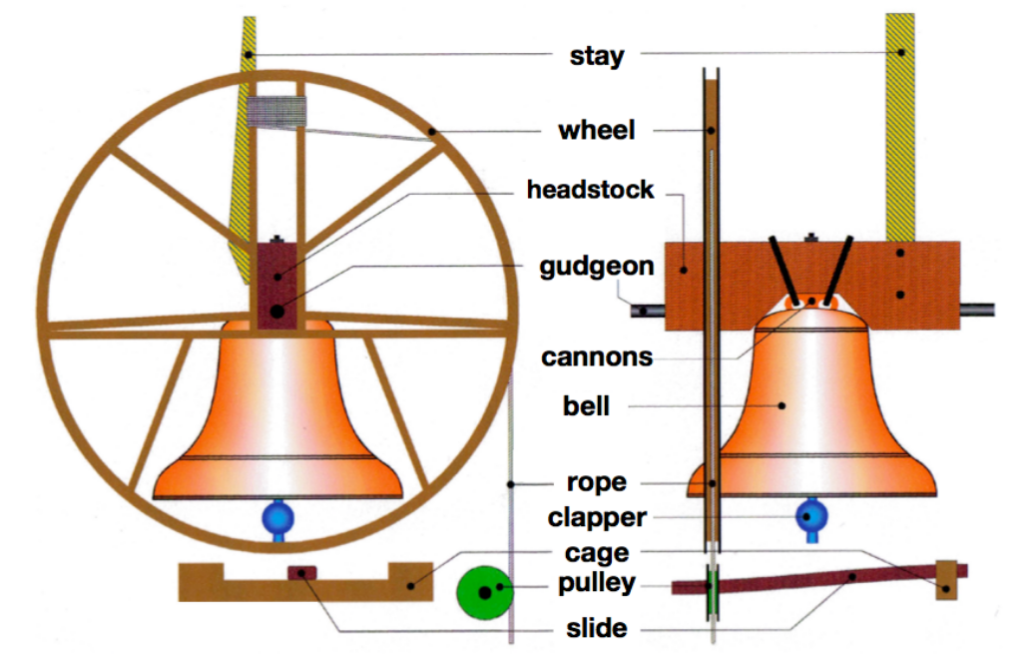This training day was held on 28th September at Chagford.
The format of the day was a meet up, coffee & chat & then up into the spacious ringing chamber. Here there were introductions, with a briefing on basic safety around bells and ropes. A powerpoint outlining some of the background of ART, it’s ethos and practice plus the fundamentals of it’s teaching approach was followed by a sequence of short demonstrations as to how the teaching of bell handling is best broken down into easy, well structured segments, that make both teaching and learning of these fundamental skills achievable and accessible. And safe. These short demonstrations were each followed by hands on sessions in four groups of three. Working in a very effective role play mode, each one in the group took turns to be teacher, learner and observer. This worked well, and was most enjoyable. Sessions included good stance, the correct grip, working on various technical skills on a down rope (or practice rope), shadowing the teacher to get correct hand and arm movement and co-ordination, then the teaching of tail stroke, hand stroke to the balance, ringing with a bell well below the balance, etc. All practical sessions had the trios working as a team with the trainee teacher doing various parts of the ringing whilst allowing the learner to ‘have a go’ at small aspects of the overall stroke in a safe and supported manner. Excellent scaffolding so that the learner would never be put out of their comfort zone. Too many tiny unpicked aspects of teaching good/correct handling to mention here.
An enjoyable pub lunch was followed by more practical work, including teaching ringing up and down, without the need to worry about coils, as well as coil practice on a dead or down rope. The need for frequent, regular practice at doing this was stressed. On a ‘ live’ bell rope, the ring down (& then up) was with the learner pulling up the bell, unaided, up to (or down from) the half way position, with the teacher in the group only doing the hand stroke until no longer necessary, or once the bell started to bob on the way up. The observer came into their own as an additional helper, by taking in (or gradually releasing) the flapping tail rope where a coil would normally have been made or need releasing. As a learner who always struggled to take the first coil, I found this exercise particularly interesting. After a final practical session on ‘how to take the tail’ from a ringer – and then take over the whole stroke, there was another powerpoint recapping what had been learned, what ART’s process of teaching and learning looks like, best practice as a teacher and then a video showing ‘good’ and ‘bad’ techniques and how to rectify them. This was followed by a live demonstration of some of the bad techniques which we were all asked to comment on and suggest how to rectify.
I enjoyed this whole day session, which was extremely well organised and well thought out, with excellent modelling by the ART trainers, and handy teaching resources, including a folder of very useful information sheets, booklets and so on. The whole day ran like a well-oiled machine, helped by coffee and tea breaks at just the right moments… and it would be of use whether the participants were attending as a start to becoming an accredited ART teacher, or wanting to be a good helper to a teacher, or even as a learner wanting to improve their own bell handling.
The only things that might have improved it for me would be for there to be more practical time and a little bit more work on troubleshooting in tricky situations. Like an ‘out of control’ bell rope, flapping wildly around the ringing room. As I have experienced a few situations like this, and have felt too inexperienced – too lacking in confidence to intercede – it is my main area of concern, and one of the reasons why I would not want to become an ART accredited ringing teacher at this time. However, in the future I might well want to take this forward – to help with ringing training and support new ringers using the ART model of teaching and learning.
To summarise , an excellent and enjoyable one day training course, with just the right balance of ‘chalk and talk’ and practical activity, and packing quite a lot into the time. There is only so much time in a one day course, so anything that I still wanted to be covered, might possibly be part of the next (2F) course? Or perhaps there could be a separate, very hands on trouble shooting course? I would definitely recommend this course to anyone who wants to be a helpful ringer in their tower band, or within their branch.

